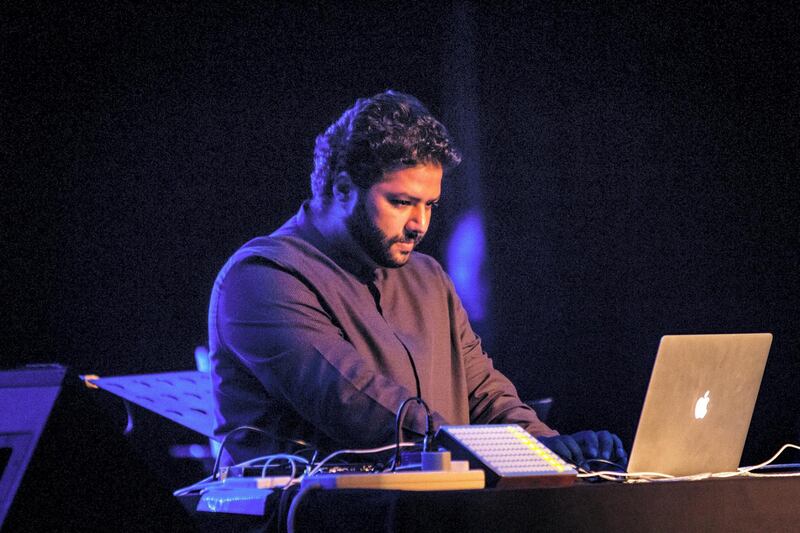Alarge part of the audience will no doubt be unfamiliar with the swaying sounds of Tambura music. But it will also be a relatively new beginning for Bahraini composer Hasan Hujeiri when he takes to the stage tonight.
Hujeiri admits to not being overly familiar with Gulf music traditions a year ago, but when given the brief to explore its regional roots and perform select pieces as part of Abu Dhabi Art's opening reception, he dived right in.
It meant travelling around the region and meeting some of the few musicians left who are keeping that tradition alive by performing in various cultural showcases – a few of them will be part of his backing band in the performance at Manarat Al Saadiyat. “The Gulf has various music styles; Tambura is just one of them,” he says. “And it extends to certain parts of North Africa as well.”
Dating back more than a century, Tambura is named after its signature instrument. Almost five feet tall, it resembles a harp with its body often made of a mixture of bamboo and fabric. Its strings, made from animal sinew, sit atop a hollow bowl carved from wood.
Styled to play three different oriental maqams (musical modes), the sound emitted is often deep and cavernous. Pared with percussion styles rooted to specific regions, it forms the soundtrack to many local dances performed by communities stretching from the UAE to Egypt and Sudan. Hujeiri explains that the music spread through the region via trade routes both on land and sea. “People would meet each other and exchange ideas and cultures, but it changed and developed depending on each area,” he says.
For example, Hujeiri says the Tambura is performed differently in the UAE and in Bahrain. “A big part of that is the dialect, of course, and the way, the compositions and songs are performed.”
One defining characteristic of the UAE’s Tambura tradition is the deep, rumbling percussion sounds. “In the UAE, the drum is played with half of it buried in the ground, so it feels like the ground is shaking underneath your feet,” he says.
_____________________
Read more:
Everything you need to know about what's on show at this year's Abu Dhabi Art
[ Traditional music and its instruments struggle for survival ]
Inside Jameel Arts Centre: a game changer on Dubai Creek
One million people visited Louvre Abu Dhabi in its first year
_____________________
But one thing that hasn’t changed is the lyrical content. With the music often played in large social gatherings, the songs are often imbued with Islamic religious chants and odes to family and community.
Hujeiri’s 30-minute concert won’t be a total throwback to a different era, however. With a degree in music composition from Seoul National University in South Korea and an accomplished oud player, he plans to add some modern sounds to the mix. “I will be adding some electronic music elements into the songs,” Hujeiri says.
“But I won’t go as far to say that I am trying to make Tambura sounds modern. The music is perfect the way it is and it doesn’t need updating. I am just adding my own personal touch to it.”
Hasan Hujeiri performs tonight as part of the Abu Dhabi Art opening reception at The Garden, Manarat Al Saadiyat, at 7pm. Tickets cost Dh100 and are available from www.abudhabiart.ae






